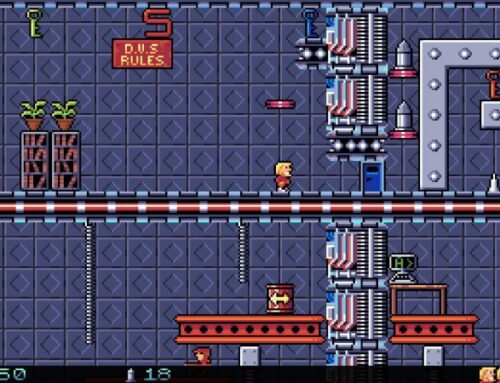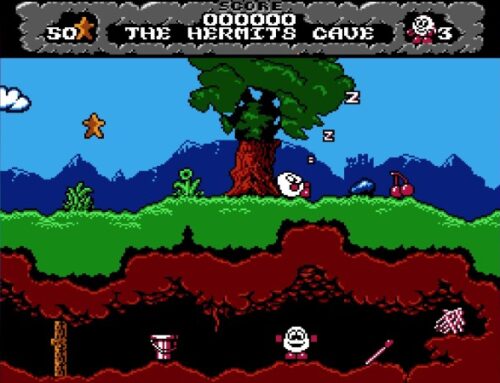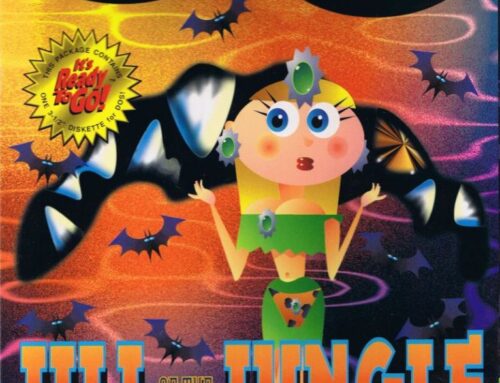We all love a list, so every Tuesday we’re posting one, on a variety of retro-themed topics! Feel free to share your own favourites down below — and let us know what other lists you’d like to see on future Tuesdays!
Thanks to emulation, these days it’s easier than ever to play retro games with the controller of your choice. Even today’s retro gaming systems such as the Evercade support a wide variety of different controllers rather than restricting you to proprietary joypads. It’s a nice return to a situation that home computer fans were well familiar with back in the day: rather than there being a single, definitive joystick for each system, you could pick and choose whatever you wanted to use according to your own preferences.
So with that in mind, this week’s 10 of the Best Tuesdays is all about joysticks for classic retro home computers — specifically those that you can just plug into an Atari 2600, Atari 8-bit or ST, Commodore 64 and Amiga… and indeed, any other device with a suitable 9-pin D-connector available for your use.
So let’s get started!

Monster Joysticks Deluxe Mini Monster
We can’t talk about retro gaming joysticks without mentioning Monster Joysticks’ excellent modern offerings. Featuring full compatibility with classic systems, arcade-quality parts in the premium models — plus the wonderful ability to map a button to “up” on the joystick. Perfect for retro platformers!

Super Pro Zipstik
This delightful joystick was regarded as an excellent investment back in the day, and indeed it still holds up well today with its arcade-style stick and satisfyingly clicky buttons. Reliability generally depends on how much abuse it’s taken over the years — in other words, those which were used to play Activision’s Decathlon on a regular basis are rather more likely to have failed — but this was a good quality stick back when it was first made, and many are still working just fine well into the 21st century.

Wico Command Control
This was a premium-tier joystick back in the day, and it’s not hard to see why. Solid, metallic construction, a lack of flimsy-feeling clicky microswitches in favour of the more substantial-feeling leaf switches plus a nicely assertive appearance makes this a fine addition to any retro computing desk. There are several different variants of the Command Control available, including the arcade-style one pictured here, plus one with a distinctive “bat” handle with plastic all up the shaft. Oo-er, missus.

Cheetah Bollistick
This was a bit of a rarity back in the day: a joypad, but for home computers! Perhaps a little small by modern standards, but the curiously angled D-pad and pleasing buttons make this rather comfortable to hold and satisfying to use — though it does work for certain types of game rather better than others. Avoid “push up to accelerate” racing games! Also note there are variants of this for various consoles, too — make sure you get the right one for the system you want to use it on.

Konix Speedking
This distinctively designed joystick was a firm favourite for many home computer users due to its sturdy construction, good response and satisfying action. As with most microswitch-based joysticks, it’s a bit of a roll of the dice as to whether one you pick up today will still be working properly — but if you do manage to nab one in good nick, this is a great joystick.

Konix Navigator
Another one from Konix, the Navigator is a very different beast to the Speedking. In stark contrast to many other joysticks, the Navigator was not intended to be placed on a flat surface — instead, it was made to be held in the air, almost like a gun — with a perfectly positioned trigger at the front for your index figure to pull and a responsive microswitch joystick on top for precise control. Again, fully working ones can be a little hard to come by today — but if you can find one (or repair one) this is the very definition of “ergonomicawwy tewwific“.

Kempston Competition Pro
One of the most iconic joysticks of all time, the Competition Pro is primarily associated with the Commodore 64 — but as with any of these sticks it can be used with any computer that boasts the appropriate connector. Some users say these are a bit prone to getting stiff these days (aren’t we all), but again, if you can find one in good condition, this will serve you very well for some retro gaming fun. Plus, as one of the most popular joysticks of the era, these are simply collector’s items in their own right these days!

Suncom Slik Stik
A popular joystick choice due to its compact size, the Suncom Slik Stik has a pleasingly arcadey feel despite its diminutive dimensions. Plus it looks really cool thanks to its distinctive starburst design. These tend to lose their springiness over time a bit over time thanks to perishing rubber inside the stick housing, but if you treat your Slik Stik well, it will treat you well in return — plus you can probably fix one up into full working condition again reasonably easily if you were so inclined.

Spectravideo Quickshot II
Spectravideo’s Quickshot range of joysticks were second only to the Competition Pro in terms of popularity — though they are also a bit prone to failure thanks to their rather fragile clicky microswitches and springs in the triggers that often wear out, making the fire buttons unusable until you replace them. If you can get one in good working order, these are fantastic sticks for space games and flight sims in particular — they feel great in the hand, are satisfying to use and are just the thing for indulging your Luke Skywalker fantasies in Star Raiders, or bearing down on the inevitable filthy communists in a MicroProse sim from the time!

Powerplay Cruiser
One of the less well-known joysticks on this list, but definitely worth consideration. The Powerplay Cruiser is noteworthy for its adjustable resistance level, ambidextrous design and distinctive pastel colour scheme — though other designs were also available. This was a pricey, premium joystick back in the day — it retailed for almost as much as some games cost at the time, in stark contrast with the relatively “budget” price of many other sticks on this list — so if you can track one down today it should definitely serve you well. And if nothing else, the colours on the pastel variant are certainly a talking point!
And that’s your lot for today! Any favourites we missed? Let us know down in the comments or via the usual social channels!
Thanks to the Centre for Computing History and a selection of random eBay listings for the photos.





